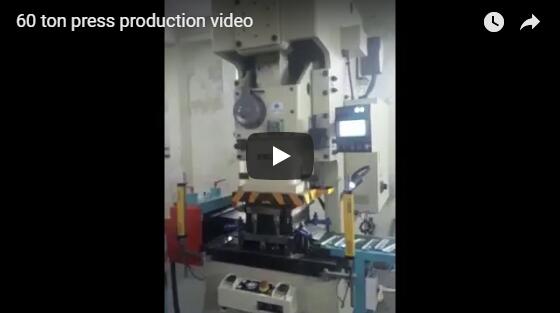This line is set up of one 300 ton press machine, one progressive die, uncoiler, straightener and feeder system for a continuously progressive stamping. Progressive stamping means that the press adopts strip stamping material and simultaneously completes multiple stamping processes with different working stations on one pair of die. Each time the die is stamped, the strip moves once a fixed distance until the product finished and come out.
The materials used are mainly black or non-ferrous metals, and the shapes of the materials are mostly long strips, or coils with a certain width. The material width must be consistent, should be within the specified tolerances, and must not have obvious burrs, distortion, waves and rust. In order to ensure that the parts have good consistency in size and shape, the material is required to have higher thickness precision and more uniform mechanical properties.
The press working table used shall be large, the power and rigidity sufficient, and the precision good. Also, the slider has to bear a large lateral force for a long time. In the event of a malfunction, the press has a reliable emergency stop function. The stroke of the press is relatively small, because the guide and bushing of the die are usually not completely disengaged during the stamping process. In the case of fewer molds working stations or less stamping force, the open type press is often used. And in the case of more mold stations, or higher pressure, the use of closed press is more appropriate.
The feeding method is continuously fed in a straight line in a “pitch”. The size of the “pitch” of different progressive dies is not equal. Its specific value is determined during the design layout, but the accuracy of the “pitch” in the feeding process must be strictly controlled to ensure the accuracy and quality of the stamping. The “pitch” accuracy of the multi-station progressive die is ensured by the precise positioning of the feeding device and the positioning guides on the die.
Progressive stamping is suitable for the production of small-sized parts in large quantities. It has high stamping precision, good consistency of stamped parts and good interchangeability.











